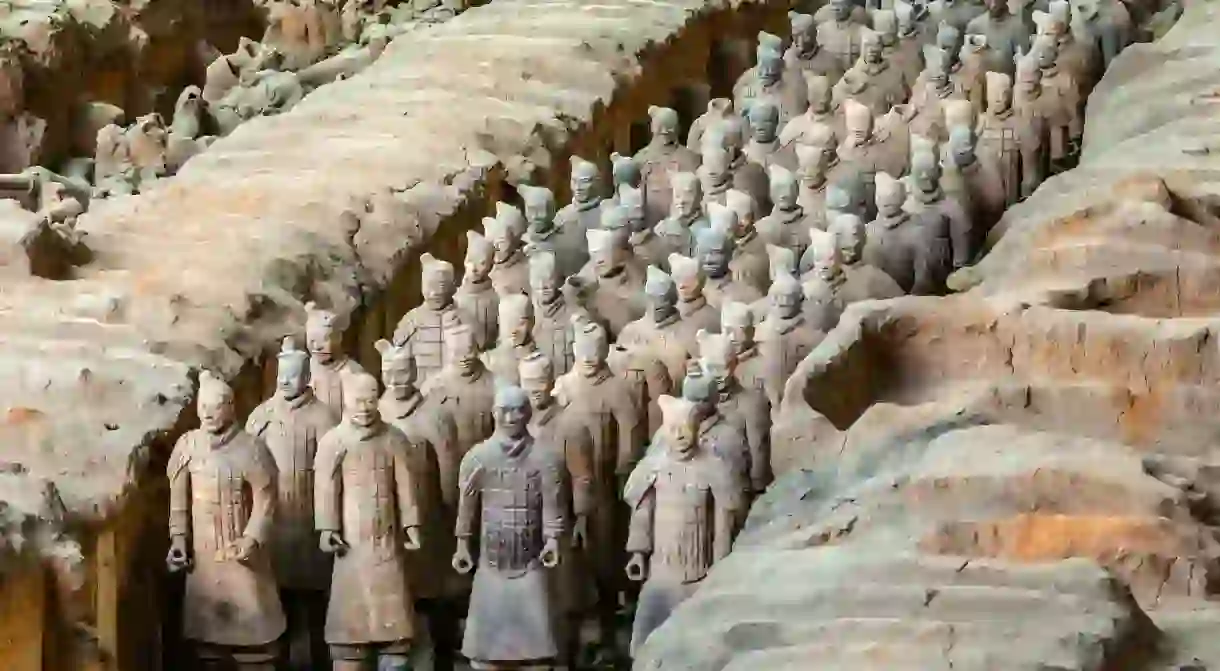Travel After Covid-19: How China Is Reopening Its Cultural Attractions

Museums, tourist attractions and natural beauty spots across China are opening up to visitors again, with new and innovative ways of maintaining physical distancing.
From 1 May 2020, for a total of five days, China held its breath as the nation observed an unusual Labour Day holiday. Millions of people donned masks and embarked on pilgrimages to cultural sites, natural parks and faraway islands for a well-deserved getaway.
Which places did Chinese tourists visit? What preventive measures were put in place in light of an ongoing global pandemic?
To show you what the rocky road to rebooting domestic tourism looks like – in China, at least – Culture Trip did some digging across the interweb.
The Palace Museum, Beijing
Museum

The year 2020 marks the 600th anniversary of the completion of the Forbidden City, also known as the Palace Museum. To meet the occasion, the museum had planned numerous bucket-list cultural events, including another special exhibition to showcase Along the River During the Qingming Festival, a meticulously painted scroll attributed to the 12th-century artist extraordinaire Zhang Zeduan. The scroll was last in the public limelight in 2015, for which the museum board had to cap the number of daily visits at 80,000. From 25 January, one day into the Year of the Rat, the Palace Museum closed to the public. More than three months later, on 1 May, the gates were cautiously reopened to visitors – at a fraction of its general capacity. People are asked to reserve a morning (4.5-hour) or afternoon (three-hour) slot in advance. Transactions can be completed via a dedicated ticketing site, where the available slots are updated live. The museum also encourages visitors to pack snacks and drinks, as on-site restaurants and cafes remain closed. Having weathered its first public holiday, the Palace Museum has since increased admission from 5,000 to 8,000 per day.
Suzhou, Jiangsu Province
Natural Feature, Historical Landmark

Blending intricate waterways and classical gardens erected and renovated over eight centuries, the eastern township of Suzhou is a living testament of the region’s commercial prowess and architectural splendour. Every year, at the beginning of May, residents also scramble for a seasonal bite of noodles topped with shrimp roe – a not-so-well-contained secret in the age of social media. Apart from implementing standard health and safety procedures, local authorities also extended opening hours across various tourism sites to stagger traffic. At the Humble Administrator’s Garden and the IM Pei-designed Suzhou Museum, for instance, visiting hours during the holiday period were extended to 7pm. Additionally, venues such as the Master of the Nets Garden rebooted its Night in the Garden programme, featuring musical and theatrical performances delivered by local opera troupes.
Kulangsu/Gulangyu, Xiamen, Fujian Province
Natural Feature

Erhai Lake, Yunnan Province
Natural Feature

Erhai Lake, a body of clear water spanning 250 sq km (97 sq mi) in the southwestern province of Yunnan, is another hotspot for leisure and nature seekers. The edge of the lake is studded with boutique hotels, capitalising on a steady influx of tourists travelling from the historic township of Dali, Kunming, the provincial capital, and everywhere in between. To juggle evolving tourism needs with local and environmental considerations, the development board unveiled a Bio Corridor over the Labour Day holiday period. Ringing the lake are pedestrian-friendly promenades, as well as bicycle lanes. The corridor also helps disperse tourists through previously inaccessible parts of the area, which has, in turn, curbed overcrowding at designated sightseeing points.
Xi’an, Shaanxi Province
Museum

Nyiden/Yading Nature Reserve, Sichuan Province
Natural Feature

Located on the southeastern tip of the Tibetan Plateau, a 15-hour drive from the provincial capital of Chengdu, this nature reserve – which doubles as a pilgrimage site – was one of the predicted hotspots for the holiday period. A report shows that most of those interested in an outing in the area tend to be small groups of self-driven tourists, who were streamlined along designated trails and encouraged to observe physical distancing throughout the expedition. Morale naturally waned after a fatiguing day-long trek up the plateau, which is at an altitude of more than 4,500m (14,764ft) above sea level. At one such juncture where dizzy-eyed tourists huddled along in proximity to each other, a site manager was captured on camera while singing to the crowd through a loudspeaker. “I’m not sure if you will like this song, but here it goes.” The crowd applauded. The manager continued with a friendly grin on his face. “And please stop overcrowding!” Recordings of this impromptu rendition of a mid-2000s pop song were widely disseminated on Chinese social media, a reminder that the road to recovery is full of surprises.













